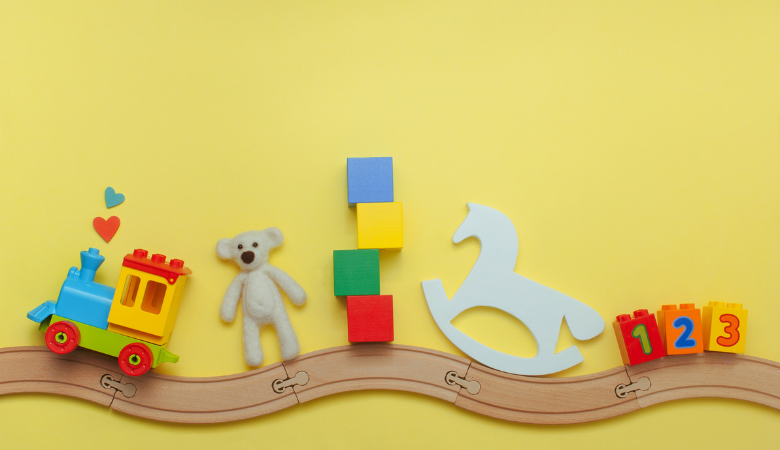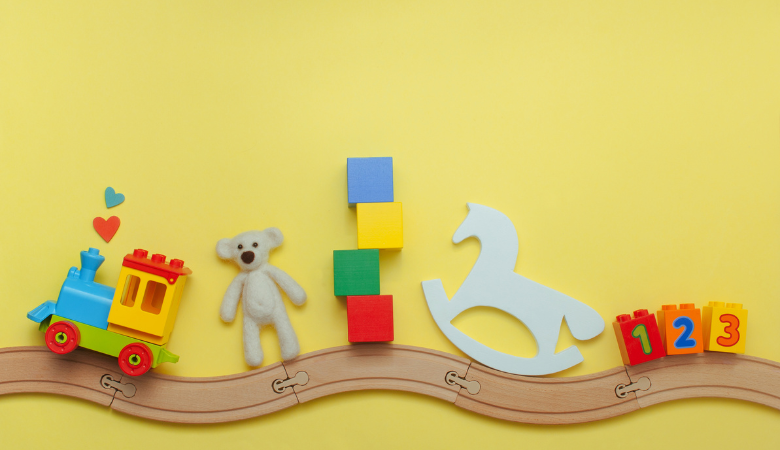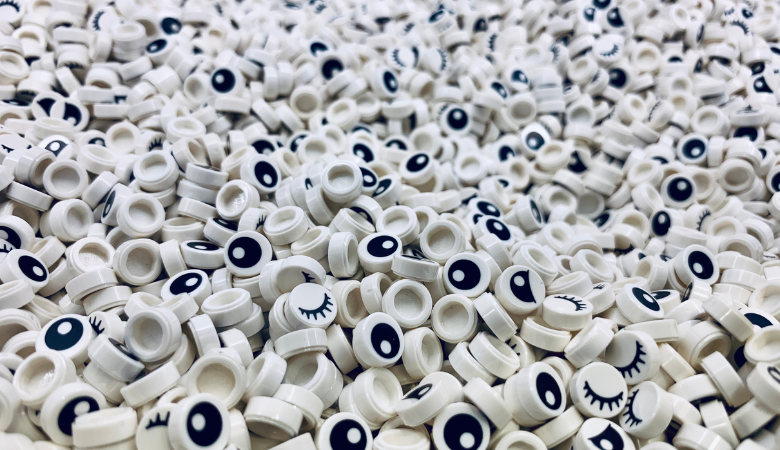
Effective quality control protects children by reducing hazards in toys. Manufacturers rely on inspections, chemical and physical testing, and staff training to meet strict safety standards. The quality assurance team checks every step to ensure toys quality control meets expectations. Continuous improvement helps address risks and maintain high assurance. Parents gain peace of mind when toys quality control aligns with regulations and industry best practices.

Key Takeaways
• Careful checks at each step make sure toys are safe.
• Tests look for bad chemicals and things that can hurt kids.
• Teaching workers about safety helps find problems early.
• Following safety rules makes sure toys are legal and good.
• Using feedback and checks helps keep toys safe over time.
• Working with trusted suppliers and labs helps test toys well.
• New machines and smart robots help make toys safer and faster.
• Easy-to-read labels and safety tips help kids play safely.
Toys Quality Control Steps
Inspections
Material Checks
Manufacturers begin toys quality control with strict material checks. They select non-toxic materials to prevent exposure to harmful chemicals. Inspectors verify the source and composition of every batch. They use checklists to confirm that all incoming materials meet safety and quality control standards. This step ensures that only approved, safe components enter the production line.
In-Process Checks
Quality control continues during manufacturing. Inspectors monitor assembly lines for defects and inconsistencies. They check for sharp edges, loose parts, and improper assembly. These in-process checks help identify issues before they reach the final stage. Workers document findings and take corrective actions immediately. This process reduces the risk of unsafe toys reaching consumers.
Final Checks
At the end of production, inspectors perform final checks on finished toys. They examine each product for visual defects, proper labeling, and secure packaging. Final inspections confirm that toys meet all safety requirements and quality control measures. Only toys that pass these checks move to distribution.
Testing
Chemical Testing
Chemical testing plays a vital role in toys quality control. Laboratories analyze toys for hazardous substances such as lead, phthalates, and other toxins. Non-toxic materials must pass strict chemical tests to ensure child safety. These tests comply with international and local regulations. Regular chemical testing prevents unsafe products from entering the market.
Physical Testing
Physical testing evaluates the durability and safety of toys. Technicians perform drop tests, tension tests, and bite tests. These tests check for choking hazards, sharp points, and breakable parts. Quality control systems require that toys withstand normal use without breaking or causing injury. Physical testing supports product quality and consumer trust.
Age Suitability
Manufacturers design toys for specific age groups. Quality control measures include verifying age suitability through testing and labeling. Inspectors ensure that small parts do not pose choking risks for young children. Clear age recommendations help parents choose safe toys for their children.
Staff Training
Training Programs
Employee training programs form the backbone of effective quality control. Companies provide regular training to workers on inspection techniques, safety standards, and proper handling of non-toxic materials. Well-trained staff can identify hazards early and follow established procedures. Training improves the overall effectiveness of toys quality control.
Safety Culture
A strong safety culture encourages employees to prioritize quality control at every stage. Management promotes open communication about safety concerns. Workers receive recognition for reporting potential risks. This culture of vigilance ensures that everyone remains committed to maintaining high product quality and safety standards.
Tip: Ongoing training and a proactive safety culture help prevent accidents and ensure compliance with evolving regulations.
Compliance and Standards
Meeting compliance with quality standards and safety standards forms the backbone of toy manufacturing. Manufacturers must follow both international safety standards and local regulations to ensure every product meets high-quality control standards. This section explains the main requirements and processes for compliance.
International Standards
ASTM F963
ASTM F963 sets the benchmark for toy safety standards in the United States. This standard covers mechanical, physical, and chemical properties. Manufacturers use ASTM F963 to guide their quality standards and ensure compliance with strict safety requirements. The standard addresses issues like sharp edges, small parts, and toxic substances.
EN 71
EN 71 represents the European Union’s main set of safety standards for toys. These regulations focus on chemical safety, flammability, and mechanical properties. EN 71 helps manufacturers align with international safety standards and maintain high-quality control standards. Compliance with EN 71 ensures toys are safe for children across Europe.
ISO 8124
ISO 8124 provides a global framework for toy safety standards. This standard covers labeling, physical properties, and chemical testing. Manufacturers who follow ISO 8124 demonstrate a commitment to international safety standards and quality standards. ISO 8124 supports global trade by harmonizing safety requirements.
Regional Rules
Local Regulations
Every region enforces its own safety standards and regulations. Manufacturers must understand and follow these rules to achieve compliance. For example, the European Union enforces REACH, which restricts hazardous chemicals in toys. Local regulations often address unique risks found in specific markets.
Documentation
Proper documentation proves compliance with quality standards and safety standards. Manufacturers keep detailed records of test results, inspection reports, and certificates. This documentation supports transparency and helps authorities verify that toys meet all regulations. Organized records also speed up the certification process.
Certification
Labeling
Clear labeling shows that a toy meets safety standards and quality standards. Labels often include age recommendations, warnings, and certification marks. Accurate labeling helps parents make informed choices and demonstrates compliance with high-quality control standards.
Certification Process
The certification process involves third-party testing and official approval. Independent laboratories test toys against safety standards and quality standards. Once a toy passes all tests, it receives certification. This process ensures compliance and builds trust with consumers.
Note: Consistent compliance with safety standards and quality standards protects children and supports a company's reputation.
Quality Control Challenges
Hazard Detection
Choking Risks
Choking hazards remain a top concern in toy safety. Small parts can detach during play, posing a serious risk to young children. Quality control teams use specialized gauges to test whether components fit inside a standardized cylinder. If a part fits, it fails the safety check for children under three years old. Inspectors also review assembly methods to ensure that pieces stay securely attached. Regular monitoring helps prevent dangerous incidents.
Toxic Substances
Toys must not contain harmful chemicals. Quality control experts test for substances like lead, phthalates, and heavy metals. They select non-toxic materials for all components, including paints and coatings. Laboratories perform chemical analyses to confirm compliance with safety standards. These tests protect children from exposure to toxic substances and support regulatory requirements.
Sharp Parts
Sharp edges or points can cause injuries. Inspectors examine toys for burrs, splinters, or unfinished surfaces. They use tactile and visual checks to identify potential hazards. If they find sharp parts, they flag the item for immediate correction. This process ensures that only safe toys reach the market.
Production Consistency
Batch Variability
Manufacturers must produce toys with consistent quality. Batch variability can introduce unexpected risks. Quality control teams compare samples from different production runs. They look for changes in color, texture, or assembly. Any variation may signal a problem in the process. Early detection allows for quick adjustments and reduces the chance of defects reaching consumers.
Supplier Quality
Suppliers play a critical role in toy safety. Quality control teams evaluate suppliers through audits and performance reviews. They check that suppliers follow strict guidelines for materials and processes. Reliable suppliers help maintain high standards and reduce the risk of unsafe products entering the supply chain.
Recalls
Recall Steps
When a safety issue arises, manufacturers must act quickly. The recall process involves several steps:
1. Identify the affected products.
2. Notify regulatory authorities.
3. Remove the products from stores and warehouses.
4. Inform consumers about the recall.
5. Investigate the root cause and implement corrective actions.
Tip: A clear recall plan minimizes harm and protects a company’s reputation.
Consumer Communication
Effective communication builds trust during a recall. Companies provide clear instructions for returning or disposing of recalled toys. They use websites, social media, and customer service hotlines to reach affected families. Transparent updates reassure consumers and demonstrate a commitment to safety.
Continuous Improvement
Continuous improvement forms the backbone of effective quality control in toy manufacturing. Companies that focus on ongoing enhancements can quickly adapt to new risks and maintain high product quality.
Data Use
Quality Data
Manufacturers collect quality data at every stage of production. Inspectors record test results, defect rates, and inspection findings. This data helps teams identify trends and recurring issues. By analyzing quality data, managers can make informed decisions that strengthen quality control processes.
Feedback
Feedback from customers and staff provides valuable insights. Companies encourage parents and retailers to report safety concerns or product defects. Employees also share observations from the production floor. Teams review this feedback regularly and use it to refine procedures. Quick responses to feedback help prevent future problems and improve overall safety.
Tip: Consistent data collection and open feedback channels drive continuous improvement in quality control.
Lean Methods
Waste Reduction
Lean methods focus on reducing waste in manufacturing. Teams identify unnecessary steps, excess materials, and inefficient processes. By streamlining operations, companies lower costs and minimize the risk of errors. Waste reduction supports quality control by ensuring that only essential activities remain in the workflow.
Preventive Actions
Preventive actions address potential issues before they become serious problems. Teams use root cause analysis to find the source of defects. They then implement changes to prevent recurrence. Preventive actions may include equipment upgrades, process adjustments, or additional staff training. These steps help maintain high product quality and reduce the likelihood of recalls.
Audits
Internal
Internal audits play a critical role in quality control. Teams conduct regular reviews of procedures, documentation, and compliance with safety standards. Internal audits help identify gaps and areas for improvement. They also ensure that staff follow established protocols.
Third-Party
Third-party audits provide an objective assessment of quality control systems. Independent auditors review manufacturing processes, test results, and safety records. These audits verify compliance with industry regulations and highlight opportunities for further improvement. Companies that welcome third-party audits demonstrate a strong commitment to continuous improvement and consumer safety.
Note: Regular audits—both internal and third-party—help maintain high standards and build trust with consumers.
Supplier and Lab Collaboration
Supplier Management
Expectations
Manufacturers set clear expectations for suppliers to maintain high standards in toy safety. They require suppliers to use approved, non-toxic materials and follow strict production guidelines. Suppliers must provide documentation for every batch of materials. This documentation includes test results, certificates, and compliance records. Manufacturers expect suppliers to respond quickly to any quality concerns. They also require suppliers to participate in regular training sessions on safety protocols.
Evaluation
Quality control teams evaluate suppliers through scheduled audits and performance reviews. Auditors visit supplier facilities to inspect processes and verify compliance with safety standards. They review records, observe production lines, and interview staff. Teams use scorecards to rate supplier performance in areas such as material quality, delivery reliability, and responsiveness to issues. Suppliers who meet or exceed expectations remain preferred partners. Those who fall short receive corrective action plans and additional monitoring.
Third-Party Testing
Independent Labs
Independent laboratories play a crucial role in verifying toy safety. These labs conduct unbiased tests on materials and finished products. They check for hazardous chemicals, mechanical risks, and age-appropriate features. Independent labs follow international and regional safety standards. Their reports provide objective evidence that toys meet all requirements.
External Verification
External verification strengthens the quality control process. Manufacturers submit samples to independent labs for third-party testing. This process ensures that internal checks align with industry standards. External verification helps identify hidden risks that may not appear during in-house inspections. It also builds trust with regulators and consumers by demonstrating a commitment to transparency.
Tip: Regular third-party testing reduces the risk of non-compliance and supports continuous improvement in toy safety.
Partnerships
Communication
Effective communication forms the foundation of strong partnerships between manufacturers, suppliers, and labs. Teams share updates on safety standards, regulatory changes, and test results. Open channels allow quick resolution of issues and foster a culture of collaboration. Manufacturers encourage suppliers to report potential risks as soon as they arise.
Problem Solving
Collaborative problem solving addresses challenges in the supply chain. When a safety concern emerges, all parties work together to find solutions. Teams analyze root causes, develop corrective actions, and monitor results. This approach ensures that safety remains the top priority throughout the production process.
Quality Control in Manufacturing
Quality control in toy manufacturing relies on precise processes and technology. Manufacturers use advanced molding techniques to create safe, consistent, and high-quality toys. Each method offers unique benefits for safety and efficiency.
Molding Techniques
Injection Molding
Injection molding stands as one of the most common advanced molding techniques in the industry. Workers inject melted plastic into a steel mold under high pressure. This process creates detailed shapes with smooth surfaces. Inspectors check each batch for defects such as bubbles, cracks, or incomplete fills. Consistent monitoring ensures every toy part meets strict safety standards.
Blow Molding
Blow molding forms hollow plastic parts, such as balls or bottles. Operators heat plastic and inflate it inside a mold. This advanced molding technique allows for lightweight and durable toys. Quality control teams examine wall thickness and uniformity. They also test for leaks and weak spots that could pose safety risks.
Rotational Molding
Rotational molding, another advanced molding technique, produces large, hollow toys like ride-on vehicles. Workers place powdered plastic in a mold, then rotate it in an oven. The plastic coats the mold evenly. Inspectors focus on even wall thickness and smooth finishes. They check for sharp edges and ensure the toy can withstand rough play.
Thermoforming
Thermoforming shapes plastic sheets into toy components using heat and pressure. This method works well for packaging and simple toy parts. Quality control teams verify that each piece matches design specifications. They also check for warping, cracks, or sharp edges that could harm children.
Automation and AI
Automated Lines
Automated production lines improve consistency and reduce human error. Machines handle repetitive tasks such as molding, trimming, and assembly. Sensors monitor each step for defects or irregularities. Automated systems help maintain high standards in toy manufacturing by catching problems early.
AI Systems
AI systems analyze data from the production floor in real time. These systems detect patterns that may signal defects or safety risks. AI can predict equipment failures and suggest preventive maintenance. Quality control teams use AI insights to make quick decisions and improve processes. This technology supports safer and more efficient toy production.
Tip: Combining advanced molding techniques with automation and AI leads to safer toys and greater efficiency.
Consumer Trust
Transparency
Safety Info
Manufacturers build consumer trust by sharing clear and accessible safety information. They publish details about materials, testing procedures, and compliance with safety standards. Parents and caregivers can review this information on packaging, instruction manuals, or official websites. Safety data sheets and test reports offer additional assurance. When companies provide transparent safety info, families feel confident in their purchasing decisions.
Tip: Easy-to-understand safety information helps parents choose toys that match their children’s needs.
Responding to Concerns
Effective response to safety concerns strengthens consumer trust. Customer service teams answer questions about toy safety and address complaints promptly. They track reported issues and escalate serious cases to quality control teams. Manufacturers often set up dedicated hotlines or online forms for reporting problems. Quick and respectful responses show that companies value feedback and prioritize child safety.
Education
Usage Guidelines
Clear usage guidelines help families use toys safely. Manufacturers include instructions that explain proper assembly, recommended age ranges, and safe play practices. Visual diagrams and step-by-step guides support understanding. Companies also highlight important warnings, such as keeping small parts away from young children. When families follow these guidelines, they reduce the risk of accidents and injuries.
• Key elements of effective usage guidelines:
◦ Simple language
◦ Visual aids
◦ Age recommendations
◦ Safety warnings
Certified Toys
Certification marks on toys indicate compliance with recognized safety standards. These marks reassure parents that products have passed rigorous testing. Manufacturers display certification logos on packaging and in product descriptions. Families can look for these symbols to confirm that toys meet strict safety requirements. Certified toys often come with documentation that outlines the testing process and results.
Note: Choosing certified toys gives families peace of mind and supports safer play environments.
Manufacturers who prioritize transparency and education foster strong consumer trust. They empower families to make informed choices and create safer experiences for children.
Ongoing quality control remains essential for toy safety. Inspections, rigorous testing, and strict compliance with standards help reduce risks. Teams that embrace continuous improvement and foster collaboration create safer products. They also support sustainable practices and consider eco-friendly packaging in their processes. Manufacturers who stay vigilant at every stage protect children and build trust with families.


